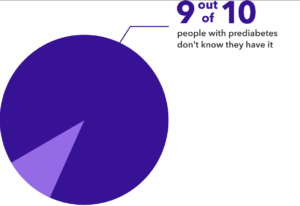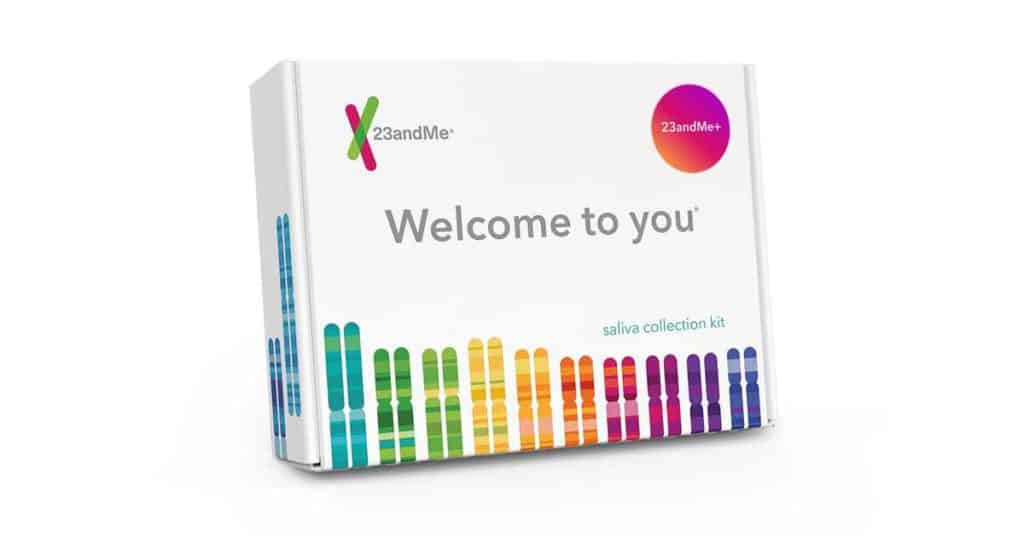Is Type 2 Diabetes Genetic?Explore Type 2 Diabetes and what your DNA can tell you
Learn more about how our lifestyle, diet, and genetics all can influence the chances of developing type 2 diabetes (T2D).
If you’re concerned about how your family history or your weight might be contributing to your risk, talk to your doctor. Want to learn a little more about type 2 diabetes, read on.
Knowing T2D
Diet, weight, lifestyle, and genetics each influence one’s personal chances of developing type 2 diabetes, the most common form of diabetes.
But many of us are unaware of what could increase our chances of developing type 2 diabetes. More than a third of adults in the United States are prediabetic, and the vast majority of them don’t even know it.
It’s a massive public health crisis. For those with untreated type 2 diabetes, the impact of the condition can be devastating. And yet this is a condition that is to some extent preventable.
What is type 2 diabetes?
It’s all about insulin, a hormone secreted from the pancreas that helps signal our cells to take up glucose. Glucose, a type of sugar, is what is broken down from the food we eat. The glucose in turn is used to power our cells or is stored for later use.
For those who develop type 2 diabetes, that process is thrown off, as our cells gradually become less sensitive to the insulin signal and the body becomes insulin resistant.
In people with insulin resistance, the pancreas keeps producing insulin to compensate for that lost signal. But over time it can’t produce enough insulin and blood sugar rises. (High blood sugar is known as hyperglycemia.) In the later stages of type 2 diabetes, the pancreas actually loses its ability to produce enough insulin. This is why those with type 2 diabetes often need insulin injections.
Meanwhile, all that blood sugar damages the body, and at first, this can happen without obvious symptoms. Some of the earliest symptoms include things like fatigue, blurred vision, and frequent infections.
But over time the damage can lead to serious and life-threatening health complications like heart disease, impaired kidney function, blindness, and nerve damage.
That’s why learning more about what can increase your chances and taking action to prevent developing type 2 diabetes is so important.
Find out how genetic testing for type 2 diabetes works.
Is Type 2 Diabetes genetic?
Your genes play a role in your chances of developing type 2 diabetes. And it’s not just a few genes either but many thousands of genetic variants that contribute. Scientists have even created polygenic models that use these many genetic variants together with other data to more precisely predict the chances of developing type 2 diabetes.
Yet your DNA is just one of many factors that contribute to your chances of developing type 2 diabetes.
Based on data from a few large studies it’s estimated that between 20-80 percent of the risk for developing type 2 diabetes may be explained by genetics. But genetics only explains part of your likelihood for developing type 2 diabetes; your age, diet, weight, ethnicity, and activity levels all play a role.
Find Out if Your Genetics Might Increase Your Risk for Type 2 Diabetes.

And it’s even more layered than that. For example, your weight — or more specifically your Body Mass Index (BMI) — contributes to your risk. But your weight is also influenced by a complex mix of genetics, lifestyle, and your environment. An unhealthy diet and a sedentary lifestyle contribute to higher BMI, but obesity also runs in families, and families tend to share similar diet and lifestyle choices along with genetics.
So that’s why understanding how and why some people develop type 2 diabetes and others don’t is helpful and could give each of us insight into how to prevent it.
Recognize that your genetics is not your destiny and that knowing you may have a higher genetic likelihood for type 2 diabetes can help motivate you to make healthier choices.
Why you should care
Beyond the massive public health crisis around growing numbers of people with type 2 diabetes, is the devastating impact the condition has on individuals and their families. For one, left untreated, type 2 diabetes can kill you.

There are tens of millions of people with type 2 diabetes or who are prediabetic and don’t even know it as it silently does its damage. This is particularly true for individuals who do not have ready access to health care or regular checkups.
Type 2 diabetes impacts Black, Latino, American Indian/Alaska Native, Native Hawaiian/Pacific Islander, and Asian American populations at higher rates than those of European ancestry. To address some of these differences the U.S. Preventative Task Force recommended that clinicians consider screening earlier than age 35 for people of all these ancestries who are overweight.
No matter who you are, if you have untreated type 2 diabetes, over time the impacts can become profound. Those impacts can include:
- Vision loss, which can lead to blindness
- Kidney damage, which can lead to kidney failure
- Nerve damage that can lead to pain or numbness in the feet and hands
- Heart disease
- Stroke
But maintaining a healthy weight and dietary changes — a diet lower in sugar, refined carbohydrates, and red meat for instance — along with physical activity can help prevent one from ever developing type 2 diabetes. Beyond that, treatment with medication and a healthy lifestyle can help manage type 2 diabetes and may reduce the likelihood of complications.
Who is most at risk for type 2 diabetes?
Two in five Americans, or around 40 percent of the population, are expected to develop type 2 diabetes in their lifetime.
While anyone can develop type 2 diabetes, some important risk factors other than your genetics, age, weight, and lifestyle are:
- Being of African American, Asian American, Hispanic/Latino, Native American, or Pacific Islander descent
- Having a family history of type 2 diabetes
- Being prediabetic (where blood sugar is elevated, but not high enough to be called diabetes)
- Having a history of gestational diabetes (diabetes that develops during pregnancy)
Assess your own risk. Take the American Diabetes Association risk test. Or talk to your healthcare provider.
What can you do to help prevent type 2 diabetes?
You know at least some of what to do to prevent type 2 diabetes.
Maintaining a healthy lifestyle goes a long way toward lowering your risk, that means things like stopping smoking if you smoke, reducing your alcohol intake, and then eating healthier, exercising, and maintaining a healthy weight.
You can also talk to your health care provider. They may recommend testing to determine if you are prediabetic or have type 2 diabetes. One way to check is to get a hemoglobin A1C test that measures the average blood sugar level over three months.
That might give you all the motivation you need to get and stay healthy.
Helpful Resources
We know that there are great and trusted advocacy groups that share our commitment to educating and supporting those with type 2 diabetes or at risk of developing the condition.
Here are just a few resources and organisations you can connect with to deepen your knowledge and empower yourself.
National Diabetes Prevention Program
National Institute of Diabetes and Digestive and Kidney Diseases
Got Questions? You’re Not Alone.
What if I’m prediabetic?
If you have prediabetes, it’s especially important to make healthy lifestyle choices because they can help delay or even prevent the progression from prediabetes to diabetes. People with prediabetes can lower their blood sugar levels with weight loss, diet, and exercise. It’s important to continue with regular screening and any other preventative steps your healthcare provider recommends.
In addition, people with prediabetes and certain other risk factors for type 2 diabetes may be eligible for diabetes prevention programs. In these programs, a lifestyle coach teaches strategies for losing weight and maintaining healthy habits over time. Some insurance programs cover the cost of the program.
Find a diabetes prevention program through the CDC.
What if I already have type 2 diabetes?
If you have type 2 diabetes, it’s important to continue with any treatments prescribed by your healthcare provider. Type 2 diabetes puts individuals at risk for serious health complications such as heart disease, stroke, vision loss, kidney disease, and nerve damage. Along with any prescribed medications, lifestyle choices like eating a healthy diet, exercising, and achieving and maintaining a healthy weight are important for managing blood sugar levels.

Health + Ancestry Service
Please note:
- The 23andMe Type 2 Diabetes Health Predisposition report does not diagnose type 2 diabetes or prediabetes and should not be used to make medical decisions.
- The report was developed by 23andMe scientists using data and insights gathered from thousands of customers who participate in our research. Reports based on 23andMe research provide an estimate of your likelihood of developing a condition based on your genetics and other factors. This report does not account for lifestyle or family history.
- The report does not account for every possible genetic variant that could affect your likelihood of developing type 2 diabetes.
References
* The resources listed are external sites intended to provide information only and are not intended as an endorsement of any particular organisation or course of action. The information on these external sites is not verified by 23andMe and may contain disturbing or graphic medical content.